#social monitoring tools
Text

Differnce between social media listening, Social media analitics and social media managament?
Social media listening, social media analytics, and social media management are three distinct activities related to managing an online presence on social media platforms.
#social monitoring tools#social listening#social media listening#free social listening tools#listening social media#social listening what is
0 notes
Text
Best Social listening Tools - Konnect Insights
Best Social Media Listening Tools helps in tracking conversations, get insights to better engage with your customers. Elevate your brand’s impact with Konnect Insights.

#social media listening companies#social media listening report#social listening monitoring#social listening strategies#top social listening tools#top social media listening tools#social media listening agency
1 note
·
View note
Text
Msafely Review 2024: Is this Parental Control App worth buying?
Parents care about keeping their children safe online. But with smartphones and tablets becoming more common, the need for a good parental control application has become necessary.
If all you want is to watch what they are up to or that they stay safe on YouTube, a good parental monitoring app can be very important. That brings us to Msafely, which is one of the highest-rated parental control…
#app features#app for parents#app performance#child safety app#digital parenting#Internet Safety#mobile app review#msafely review 2024#Online Protection#parental control app#parental monitoring tool#screen time control#social media tracking#user experience
0 notes
Text
Boosting Customer Engagement with Social Media Listening Tools
In today’s fast-paced digital world, customer engagement is critical to the success of any business. With the rise of social media platforms, customers are more vocal about their experiences, expectations, and preferences. To stay ahead of the competition, businesses need to actively listen to what their customers are saying. This is where social media listening tools come into play. These tools allow businesses to monitor, analyze, and respond to customer conversations in real-time, leading to improved customer engagement and satisfaction.
What Are Social Media Listening Tools?
Social media listening tools are advanced platforms that help businesses track mentions of their brand, competitors, industry keywords, and trends across various social media channels. Unlike social media monitoring tools that primarily focus on tracking metrics like likes, shares, and comments, social media listening tools dive deeper into analyzing customer sentiments, identifying patterns, and extracting actionable insights.
For instance, a business can use these tools to identify a recurring complaint among its customers and address it proactively. By responding to customers' concerns in real-time, businesses can enhance their reputation and foster a stronger connection with their audience.
How Social Media Listening Tools Boost Customer Engagement
Understanding Customer Sentiment Social media listening tools allow businesses to gauge the overall sentiment of their brand in the market. By analyzing positive, negative, and neutral mentions, companies can understand how customers feel about their products or services. This insight is invaluable for crafting personalized responses that resonate with customers, thereby improving engagement.
Identifying Trends and Preferences Social media is a goldmine of customer opinions and preferences. By analyzing the data collected through social media listening tools, businesses can identify emerging trends and adapt their strategies accordingly. This proactive approach not only helps in meeting customer expectations but also positions the brand as a leader in the industry.
Enhancing Customer Support Social media platforms are increasingly being used as customer support channels. Integrating live chat software with social media listening tools can significantly enhance the customer support experience. Businesses can quickly identify customer queries and resolve them through live chat, leading to quicker resolution times and higher customer satisfaction.
Utilizing AI Chatbots for Business The integration of AI chatbots with social media listening tools is revolutionizing the way businesses interact with their customers. AI chatbots for business can be programmed to automatically respond to common customer queries, provide recommendations, and even guide users through complex processes. This automation not only saves time but also ensures that customers receive timely and accurate responses, boosting engagement.
The Role of Live Chat Software in Customer Engagement
Live chat software has become an essential tool for businesses looking to engage with their customers in real-time. When combined with social media listening tools, live chat software allows businesses to respond instantly to customer inquiries, complaints, and feedback. This instant communication builds trust and shows customers that their concerns are being taken seriously.
Moreover, live chat software can be integrated with AI chatbots for business to provide a seamless customer experience. AI chatbots can handle basic queries and direct more complex issues to human agents, ensuring that customers receive the best possible service at all times.
Conclusion
In the digital age, customer engagement is no longer a one-way street. Businesses must actively listen to their customers and respond to their needs in real-time. Social media listening tools, combined with live chat software and AI chatbots for business, offer a powerful solution for boosting customer engagement. By leveraging these tools, businesses can not only improve their customer relationships but also gain a competitive edge in the market.
Embracing the power of social media listening tools is no longer an option but a necessity for businesses aiming to stay relevant and thrive in today’s competitive landscape.
0 notes
Text
going to ramble rq but i think it is so corny and useless to be like “we’re exposed to more information nowadays than ever before in human history!!!!!! this is why you need to take care of your mental health and monitor your social media use” or whatever and then give no example of how to actually do that. because yes we’re exposed to more info/news every day than our ancestors but. that isnt going to change like the internet is not going away. and if you just tell people “monitor your social media use!!!” its like. sooooooo many people take that as an excuse to put their fingers in their ears and block out anything “negative” instead of learning how to take in that information, process it, and move on with their day while carrying that information in a constructive manner. like. its a good thing that people are more aware of whats happening in the world. its a good thing and regardless it isnt going away so like you need to learn how to deal with it in a way that isnt just blocking out what you dont like or going the other way and doom scrolling to the point of giving yourself panic attacks. like you need to find a good middle ground idk
#does this make sense. im so fucking tired just once i would like to wake up feeling well rested#anyways having big thoughts this morning#likeeee monitor your social media use or whatever but its like. a good thing to be exposed to things happening in the world even if they#dont make you feel ~good~. does that make sense. ifdjkfnfjnf idk#i hate the internet but i also love her she is actually such a great educational tool just by existing like. and i think a lot of younger pp#are so critical of older generations for their lack of education bcoz they dont comprehend the sheer extent to which theyve been educated by#the internet like. just by growing up with it yr exposed to so much information and yr brain loves that like mmm information yummyyyyy#and of course theres something to be said about how concerning it is tht a lot of younger gen z and gen alpha have ipad baby syndrome#technology has its benefits and drawbacks. i dont think younger ppl are doomed to be stupid forever coz of it#literally have no idea where this thought progression came from like why am i thinking abt the internet on a wednesday morning#probably the news tbh………….everything is all just constantly happening……..#BUT like thats good. idk#technology 👍
0 notes
Text
Spy on Your Success: Social Monitoring Tools for Winning Instagram Ads
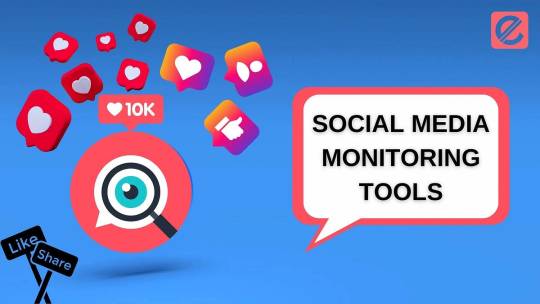
In the vibrant world of Instagram marketing, standing out from the crowd requires a strategic approach. While eye-catching visuals are crucial, creating effective Instagram ads takes more than aesthetics. This is where the powerful trio of Instagram advertising, social media monitoring tools, and website analytics comes into play.
Why It Matters: The Data-Driven Advantage
Gone are the days of throwing spaghetti at the wall and hoping it sticks. Today, successful Instagram advertising relies on data-driven insights. Here’s how each element contributes to your success:
Instagram Advertising: This is your launchpad, allowing you to target specific demographics and interests with captivating visuals and compelling messages.
Social Media Monitoring Tools: These tools act as your ears on the ground, allowing you to listen to online conversations about your brand, industry trends, and competitor strategies. This goldmine of information helps you understand what resonates with your audience and identify potential gaps in your content.
Website Analytics: This sheds light on how website visitors interact with your content after clicking on your Instagram ads. You can see what type of content converts best, allowing you to refine your ad strategy for maximum impact.
The Winning Formula: Putting it All Together
Now, let’s explore how to leverage these tools for an impactful Instagram advertising campaign:
Target the Right Audience: Use social media monitoring tools to uncover valuable insights about your target audience. What kind of content do they engage with? What are their pain points and aspirations? Use this information to tailor your Instagram ad targeting and create messages that resonate.
Craft Compelling Content: Leverage social listening data to understand what kind of visuals and messaging capture your audience’s attention. This ensures your ads are not only aesthetically pleasing but also speak directly to your audience’s needs.
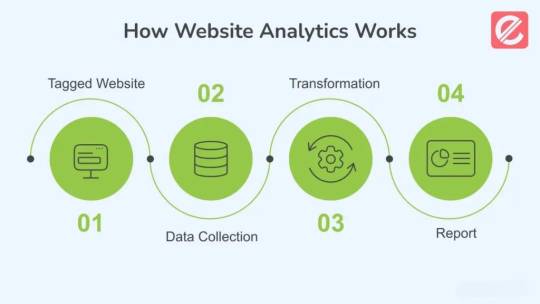
Track and Optimize: Website analytics plays a crucial role here. Track key metrics like website traffic, conversion rates, and bounce rates to understand what’s working and what’s not. Use this data to refine your ad strategy and optimize your landing pages for maximum impact.
Embrace the Feedback Loop: Continuously monitor social media conversations and website analytics to stay informed about changing trends and audience preferences. This allows you to adapt your Instagram ad strategy in real time to maintain effectiveness.
The Takeaway: A Powerful Partnership
Instagram advertising, social media monitoring tools, and website analytics are not isolated entities. Using them together gives you a comprehensive understanding of your audience, allowing you to craft highly targeted and impactful Instagram ad campaigns. This dynamic partnership will propel your brand forward and generate real results on Instagram.
0 notes
Text
Social Listening for Reputable Online Presence
Discover the power of social listening to enhance your online presence and drive business growth. Read on to learn expert tips and strategies. [Continue reading]
What is Social Listening?Importance of Social ListeningStrategies for Effective Social ListeningDefine your goalsChoose the right toolsMonitor relevant conversationAnalyze the dataEngage with your audienceExpert Tip on Social Listening…

View On WordPress
#customer feedback#social media marketing#social listening#online presence#reputation management#brand monitoring#social media monitoring#digital marketing#social media strategy#online reputation#social media listening#brand reputation#social insights#social media analytics#brand awareness#customer engagement#social media tools#social media tips#social media trends#online reputation management#brand management#social listening tools#audience insights#customer experience#brand loyalty#social media success#social media growth#brand perception#digital reputation#subhamdas
0 notes
Text
Unpacking The Myths And Realities Of Employee Monitoring In Workplace Policies

In today’s digital age, employee monitoring has become an integral part of workplace management. While some see it as an invasion of privacy, others view it as a necessary tool for ensuring productivity and security. To navigate this complex issue, it's essential to understand the myths and realities of employee monitoring within workplace policies.
A workplace policy is a formal document that outlines an organization's rules, guidelines, and expectations regarding various aspects of employee behavior and operational procedures. These policies serve as a framework to ensure consistency, fairness, and compliance with legal and regulatory requirements.
Myth 1: Employee Monitoring Equals Invasion of Privacy
A common misconception is that employee monitoring inherently violates privacy. This belief stems from fears of constant surveillance and intrusive data collection. However, the reality is that ethical monitoring practices are designed to balance the needs of the organization with respect for employee privacy. Transparency is key. Employers must inform employees about what is being monitored, the reasons for monitoring, and how the data will be used. Clear communication helps build trust and ensures employees understand the purpose behind monitoring efforts.
Reality: Monitoring Enhances Productivity And Security
When implemented correctly, employee monitoring can significantly enhance both productivity and security. By tracking work patterns, employers can identify inefficiencies and optimize workflows. Monitoring tools can highlight areas where employees may need additional training or support, leading to improved performance. Additionally, monitoring is crucial for safeguarding sensitive information and ensuring compliance with industry regulations. In sectors where data security is critical, monitoring can prevent data breaches and protect intellectual property, ultimately benefiting both the organization and its employees.
Myth 2: Employee Monitoring Creates A Hostile Work Environment
Critics often argue that employee monitoring fosters a culture of mistrust and anxiety. They believe that employees under constant surveillance will feel stressed and demoralized. While excessive or covert monitoring can indeed lead to negative outcomes, a well-balanced approach can avoid these pitfalls. Involving employees in the development of monitoring policies and being transparent about monitoring practices can mitigate feelings of mistrust. When employees understand that monitoring is in place to support and protect them, rather than to micromanage, they are more likely to accept and even appreciate it.
Reality: Monitoring Provides Objective Performance Metrics

One of the significant advantages of employee monitoring is the ability to gather objective performance data. Traditional employee performance reviews can be influenced by subjective biases, but monitoring tools provide concrete data on productivity, attendance, and task completion. This objective information can be used to make fair and informed decisions regarding promotions, bonuses, and other rewards. Furthermore, objective data can help identify high-performing employees and those who may benefit from additional training or support, fostering a more meritocratic workplace environment.
Myth 3: All Employee Monitoring Tools Are The Same
There is a widespread belief that all employee monitoring tools are equally invasive and perform the same functions. In reality, there is a diverse range of monitoring tools available, each with different features and levels of intrusiveness. Some tools focus on tracking time spent on specific tasks, while others monitor cybersecurity threats or ensure compliance with workplace employee policies. Employers can choose tools that align with their specific needs and ethical standards. It’s important for companies to research and select the right tools that provide the necessary oversight without compromising employee privacy.
Reality: Customizable Monitoring Solutions Exist

Modern employee monitoring solutions are highly customizable, allowing organizations to tailor their monitoring practices to their unique requirements. Employers can adjust the scope and scale of monitoring based on job roles, departmental needs, and specific organizational goals. For instance, roles involving sensitive data might require more comprehensive monitoring than those with less critical responsibilities. Customizable solutions ensure that monitoring is relevant and appropriate, avoiding a one-size-fits-all approach.
Striking The Right Balance
The challenge for organizations is to strike a balance between effective monitoring and respecting employee privacy. Clear and transparent workplace employee policies, developed with employee input, are crucial for achieving this balance. Monitoring should be viewed as a tool to enhance productivity and security, not as a means to control or micromanage employees.
You can also watch: EmpMonitor: Manage Remote Work Easily
youtube
Mesmerizing Words
By debunking myths and understanding the realities of employee monitoring, companies can create workplace policies that protect their interests while fostering a positive and productive work environment. Ethical monitoring can be a win-win situation, benefiting both employers and employees. In conclusion, employee monitoring is a nuanced but necessary aspect of modern workplace management. By navigating the myths and embracing the realities, companies can ensure that their monitoring practices are fair, effective, and respectful of employee privacy.
#workplace policies#workplace social media policies#workplace policies examples#HR policies#user activity monitoring tool#employee monitoring#Youtube
0 notes
Text
In retrospect, four years later, I feel like the Isabel Fall incident was just the biggest ignored cautionary tale modern fandom spaces have ever had. Yes, it wasn't limited to fandom, it was also a professional author/booktok type argument, but it had a lot of crossover.
Stop me if you've heard this one before: a writer, whether fan or pro, publishes a work. If one were to judge a book by its cover, something we are all taught in Kindergarten shouldn't happen but has a way of occurring regardless, one might find that there was something that seemed deeply problematic about this work. Maybe the title or summary alluded to something Wrong happening, or maybe the tags indicated there was problematic kinks or relationships. And that meant the story was Bad. So, a group of people takes to the Twittersphere to inform everyone who will listen why the work, and therefore the author, are Bad. The author, receiving an avalanche of abuse and harassment, deactivates their account, and checks into a mental health facility for monitoring for suicidal ideation. They never return to their writing space, and the harassers get a slap on the wrist (if that- usually they get praise and high-fives all around) and start waiting for their next victim to transgress.
Sounds awful familiar, doesn't it?
Isabel Fall's case, though, was even more extreme for many reasons. See, she made the terrible mistake of using a transphobic meme as the genesis to actually explore issues of gender identity.
More specifically, she used the phrase "I sexually identify as an attack helicopter" to examine how marginalized identities, when they become more accepted, become nothing more than a tool for the military-industrial complex to rebrand itself as a more personable and inclusive atrocity; a chance to pursue praise for bombing brown children while being progressive, because queer people, too, can help blow up brown children now! It also contained an examination of identity and how queerness is intrinsic to a person, etc.
But... well, if harassers ever bothered to read the things they critique, we wouldn't be here, would we? So instead, they called Isabel a transphobic monster for the title alone, even starting a misinformation campaign to claim she was, in fact, a cis male nazi using a fake identity to psyop the queer community.
A few days later, after days of horrific abuse and harassment, Isabel requested that Clarkesworld magazine pull the story. She checked in to a psych ward with suicidal thoughts. That wasn't all, though; the harassment was so bad that she was forced to out herself as trans to defend against the claims.
Only... we know this type of person, the fandom harassers, don't we? You know where this is going. Outing herself did nothing to stop the harassment. No one was willing to read the book, much less examine how her sexuality and gender might have influenced her when writing it.
So some time later, Isabel deleted her social media. She is still alive, but "Isabel Fall" is not- because the harassment was so bad that Isabel detransitioned/closeted herself, too traumatized to continue living her authentic life.
Supposed trans allies were so outraged at a fictional portrayal of transness, written by a trans woman, that they harassed a real life trans woman into detransitioning.
It's heartbreakingly familiar, isn't it? Many of us in fandom communities have been in Isabel's shoes, even if the outcome wasn't so extreme (or in some cases, when it truly was). Most especially, many of us, as marginalized writers speaking from our own experiences in some way, have found that others did not enjoy our framework for examining these things, and hurt us, members of those identities, in defense of "the community" as a nebulous undefined entity.
There's a quote that was posted in a news writeup about the whole saga that was published a year after the fact. The quote is:
The delineation between paranoid and reparative readings originated in 1995, with influential critic Eve Kosofsky Sedgwick. A paranoid reading focuses on what’s wrong or problematic about a work of art. A reparative reading seeks out what might be nourishing or healing in a work of art, even if the work is flawed. Importantly, a reparative reading also tends to consider what might be nourishing or healing in a work of art for someone who isn’t the reader.
This kind of nuance gets completely worn away on Twitter, home of paranoid readings.
“[You might tweet], ‘Well, they didn’t discuss X, Y, or Z, so that’s bad!’ Or, ‘They didn’t’ — in this case — ‘discuss transness in a way that felt like what I feel about transness, therefore it is bad.’ That flattens everything into this very individual, very hostile way of reading,” Mandelo says. “Part of reparative reading is trying to think about how a story cannot do everything. Nothing can do everything. If you’re reading every text, fiction, or criticism looking for it to tick a bunch of boxes — like if it represents X, Y, and Z appropriately to my definitions of appropriate, and if it’s missing any of those things, it’s not good — you’re not really seeing the close focus that it has on something else.”
A paranoid reading describes perfectly what fandom culture has become in the modern times. It is why "proship", once simply a word for common sense "don't engage with what you don't like, and don't harass people who create it either" philosophies, has become the boogeyman of fandom, a bad and dangerous word. The days of reparative readings, where you would look for things you enjoyed, are all but dead. Fiction is rarely a chance to feel joy; it's an excuse to get angry, to vitriolically attack those different from oneself while surrounded with those who are the same as oneself. It's an excuse to form in-groups and out-groups that must necessarily be in a constant state of conflict, lest it come across like This side is accepting That side's faults. In other words, fandom has become the exact sort of space as the nonfandom spaces it used to seek to define itself against.
It's not about joy. It's not about resonance with plot or characters. It's about hate. It's about finding fault. If they can't find any in the story, they will, rest assured, create it by instigating fan wars- dividing fandom into factions and mercilessly attacking the other.
And that's if they even went so far as to read the work they're critiquing. The ones they don't bother to read, as you saw above, fare even worse. If an AO3 writer tagged an abuser/victim ship, it's bad, it's fetishism, even if the story is about how the victim escapes. If a trans writer uses the title "I Sexually Identify as an Attack Helicopter" to find a framework to dissect rainbow-washing the military-industrial complex, it's unforgivable. It's a cesspool of kneejerk reactions, moralizing discomfort, treating good/evil as dichotomous categories that can never be escaped, and using that complex as an excuse to heap harassment on people who "deserve it." Because once you are Bad, there is no action against you that is too Bad for you to deserve.
Isabel Fall's story follows this so step-by-step that it's like a textbook case study on modern fandom behavior.
Isabel Fall wrote a short story with an inflammatory title, with a genesis in transphobic mockery, in the hopes of turning it into a genuine treatise on the intersection of gender and sexuality and the military-industrial complex. But because audiences are unprepared for the idea of inflammatory rhetoric as a tool to force discomfort to then force deeper introspection... they zeroed in on the discomfort. "I Sexually Identify as an Attack Helicopter"- the title phrase, not the work- made them uncomfortable. We no longer teach people how to handle discomfort; we live in a world of euphemism and glossing over, a world where people can't even type out the words "kill" and rape", instead substituting "unalive" and "grape." We don't deal with uncomfortable feelings anymore; we censor them, we transform them, we sanitize them. When you are unable to process discomfort, when you are never given self-soothing tools, your only possible conclusion is that anything Uncomfortable must be Bad, and the creator must either be censored too, or attacked into conformity so that you never again experience the horrors of being Uncomfortable.
So the masses took to Twitter, outraged. They were Uncomfortable, and that de facto meant that they had been Wronged. Because the content was related to trans identity issues, that became the accusation; it was transphobic, inherently. It couldn't be a critique of bigger and more fluid systems than gender identity alone; it was a slight against trans people. And no amount of explanations would change their minds now, because they had already been aggrieved and made to feel Uncomfortable.
Isabel Fall was now a Bad Person, and we all know what fandom spaces do to Bad People. Bad People, because they are Bad, will always be deserving of suicide bait and namecalling and threatening. Once a person is Bad, there is no way to ever become Good again. Not by refuting the accusations (because the accusations are now self-evident facts; "there is a callout thread against them" is its own tautological proof that wrongdoing has happened regardless of the veracity of the claims in the callout) and not by apologizing and changing, because if you apologize and admit you did the Bad thing, you are still Bad, and no matter what you do in future, you were once Bad and that needs to be brought up every time you are mentioned. If you are bad, you can NEVER be more than what you were at your worst (in their definition) moment. Your are now ontologically evil, and there is no action taken against you that can be immoral.
So Isabel was doomed, naturally. It didn't matter that she outed herself to explain that she personally had lived the experience of a trans woman and could speak with authority on the atrocity of rainbow-washing the military industrial complex as a proaganda tool to capture progressives. None of it mattered. She had written a work with an Uncomfortable phrase for a title, the readers were Uncomfortable, and someone had to pay for it.
And that's the key; pay for it. Punishment. Revenge. It's never about correcting behavior. Restorative justice is not in this group's vocabulary. You will, incidentally, never find one of these folks have a stance against the death penalty; if you did Bad as a verb, you are Bad as an intrinsic, inescapable adjective, and what can you do to incorrigible people but kill them to save the Normal people? This is the same principle, on a smaller scale, that underscores their fandom activities; if a Bad fan writes Bad fiction, they are a Bad person, and their fandom persona needs to die to save Normal fans the pain of feeling Uncomfortable.
And that's what happened to Isabel Fall. The person who wrote the short story is very much alive, but the pseudonym of Isabel Fall, the identity, the lived experiences coming together in concert with imagination to form a speculative work to critique deeply problematic sociopolitical structures? That is dead. Isabel Fall will never write again, even if by some miracle the person who once used the name does. Even if she ever decides to restart her transition, she will be permanently scarred by this experience, and will never again be able to share her experience with us as a way to grow our own empathy and challenge our understanding of the world. In spirit, but not body, fandom spaces murdered Isabel Fall.
And that's... fandom, anymore. That's just what is done, routinely and without question, to Bad people. Good people are Good, so they don't make mistakes, and they never go too far when dealing with Bad people. And Bad people, well, they should have thought before they did something Bad which made them Bad people.
Isabel Fall's harassment happened in early 2020, before quarantine started, but it was in so many ways a final chance for fandom to hit the breaks. A chance for fandom to think collectively about what it wanted to be, who it wanted to be for and how it wanted to do it. And fandom looked at this and said, "more, please." It continues to harass marginalized people, especially fans of color and queen fans, into suffering mental breakdowns. With gusto.
Any ideas of reparative reading is dead. Fandom runs solely on paranoid readings. And so too is restorative justice gone for fandom transgressions, real or imagined. It is now solely about punitive, vigilante justice. It's a concerted campaign to make sure oddballs conform or die (in spirit, but sometimes even physically given how often mentally ill individuals are pushed into committing suicide).
It's a deeply toxic environment and I'm sad to say that Isabel Fall's story was, in retrospect, a sort of event horizon for the fandom. The gravitational pull of these harassment campaigns is entirely too strong now and there is no escaping it. I'm sorry, I hate to say something so bleak, but thinking the last few days about the state of fandom (not just my current one but also others I watch from the outside), I just don't think we can ever go back to peaceful "for joy" engagement, not when so many people are determined to use it as an outlet for lateral aggression against other people.
4K notes
·
View notes
Text
How to Unplug Your Teen from Social Media: The Revolutionary Guide to Reconnecting Offline
Explore groundbreaking strategies to help your teenager strike a healthy balance between online and offline life, fostering meaningful connections beyond screens. #TeenSocialMedia #OfflineReconnection #ParentingTips #TechBalance
Navigating the Social Media Landscape
In the era of smartphones and constant connectivity, social media has become an integral part of our lives, especially for teenagers. While these platforms offer opportunities for self-expression and social interaction, they also come with challenges, including excessive screen time and potential negative impacts on mental health. As parents, it’s crucial to…

View On WordPress
#Educating Your Teen on Online Safety#Emphasizing the Importance of Real-Life Relationships#Encouraging Offline Hobbies and Interests#Exploring Tech-Free Family Activities#Fostering a Healthy Tech-Life Balance#Guide to Reducing Social Media Usage#Healthy Tech Habits#Leading by Example with Balanced Tech Use#Monitoring Screen Time#Open Conversations with Your Teen#Parenting Strategies#Promoting Face-to-Face Social Interaction#Providing Offline Learning Opportunities#Reconnecting Offline#Setting Clear Boundaries and Expectations#Supporting Mental and Emotional Well-being#Teaching Digital Detox Techniques#Understanding the Impact of Social Media#Unplugging Your Teen from Social Media#Using Parental Control Tools
0 notes
Text
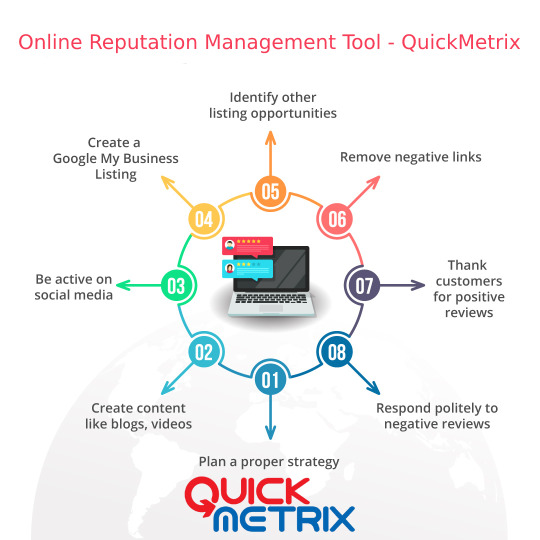
How do I monitor my online reputation?
Discover effective ways to track your online presence and manage your reputation. Learn how to stay on top of your digital image.
#Online reputation management India#Best online reputation tools India#Monitor brand reputation online India#Online reputation tracker India#Reputation monitoring services India#India online presence monitoring#Online brand reputation check India#Web monitoring services India#Social media reputation management#Track online mentions India#Online reputation score India#Brand image monitoring India
0 notes
Text
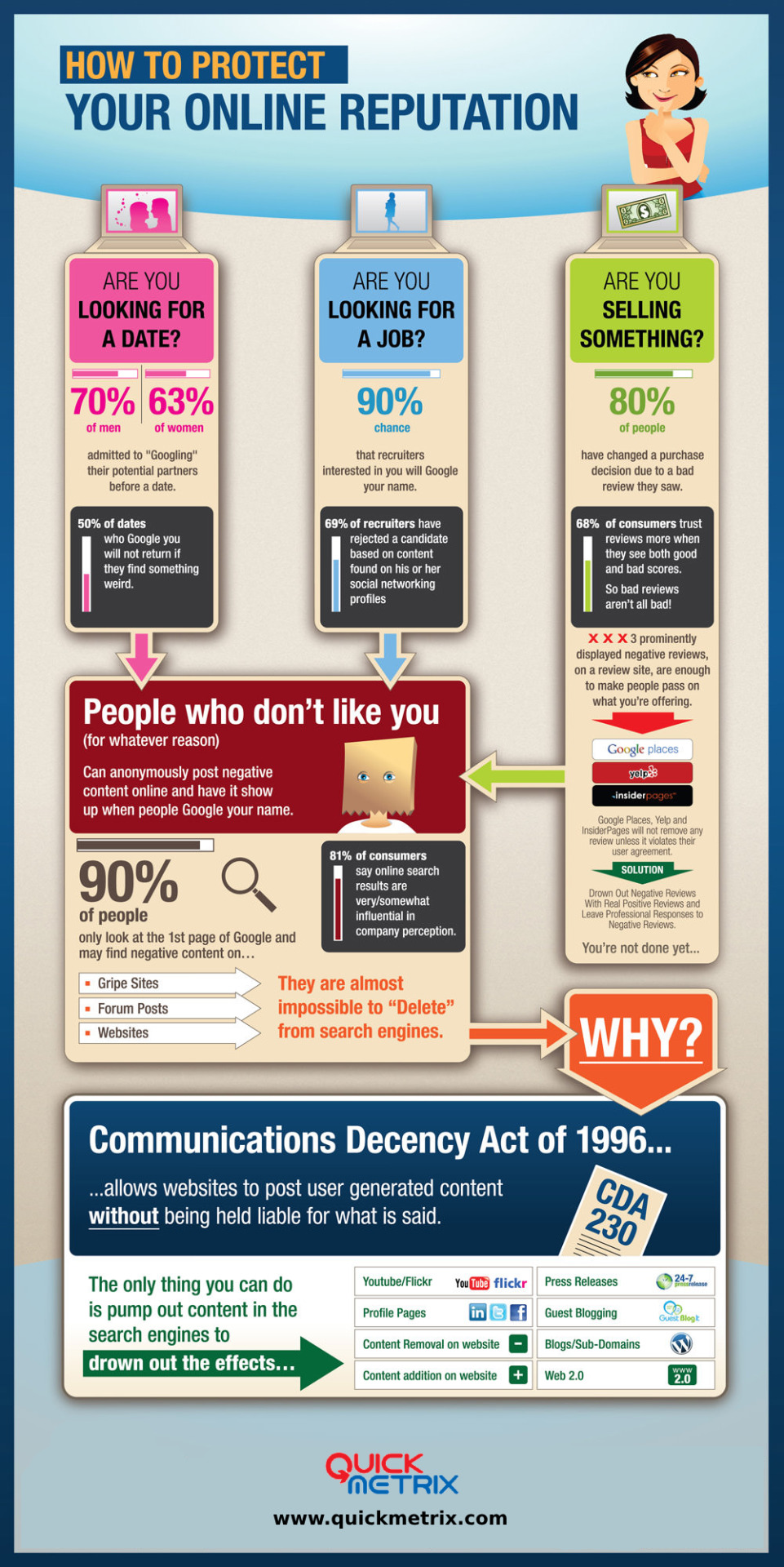
How protect your brand's reputation
With the power of social media and online reviews, information spreads rapidly, making it essential for businesses to safeguard their reputation. This article will guide you through effective strategies to protect and enhance your brand's reputation, ensuring that it remains untarnished in the eyes of your customers and the public.
#social media listening tools#social listening tools#social media monitoring tools#social monitoring tools#social listening#social media social listening
0 notes
Text
Social Media Crisis Management: Handling Negative Feedback and PR
In the era of social media, businesses face the challenge of managing their online reputation effectively. Negative feedback, customer complaints, and public relations crises can escalate quickly on social platforms, impacting brand perception and customer trust. Social media crisis management is essential for safeguarding your brand’s reputation and maintaining a positive image.
By handling…

View On WordPress
#Brand perception#Clear communication#Consistent actions#Customer sentiment#Customer trust#Honest responses#Influencer support#Online reputation#Positive engagement#Positive testimonials#Real-time monitoring#Rebuilding relationships#Resolution steps#Social listening tools#Social proof
0 notes
Text
Buffer vs Later 2023: Choosing the Right Social Media Management Tool
socialjobnow.com has published a comparison between Buffer and Later, two popular social media management tools used by businesses to schedule and automate their social media posts. The article provides an in-depth analysis of each tool's features, pricing, and benefits, offering valuable insights for businesses looking to optimize their social media strategy.
The article begins by introducing Buffer and Later and highlighting their respective strengths and weaknesses. Buffer is praised for its user-friendly interface, robust scheduling options, and analytics, while Later is noted for its visual planning features, Instagram-specific tools, and ease of use.
Also delves into each tool's features, comparing them in terms of post-scheduling, content curation, analytics, and social media platform compatibility. Both tools offer a range of features, but Buffer's advanced scheduling options and analytics make it a better fit for businesses with complex social media management needs. Later, on the other hand, maybe a better choice for businesses focused on visual content and Instagram marketing.
In terms of pricing, Buffer offers a tiered pricing system based on the number of users and social media accounts, while Later offers a free plan with limited features and paid plans with more advanced functionality. Businesses should consider their specific needs and budget when choosing between the two tools.
The article concludes by emphasizing the importance of selecting a social media management tool that aligns with a business's goals and requirements. The comparison provides valuable insights into the differences between Buffer and Later, assisting businesses in making an informed decision about which tool best suits their social media management needs.
Check out the article below
#digitalmarketing#growth#social marketing#social media#social media growth#social media listening#social media management#social media marketing#social media monitoring#social media tips#management tools#social media marketing agency#online marketing
0 notes
Text
Why Your Business Needs a Social Inbox Strategy
In today's digital age, businesses are increasingly turning to online platforms to connect with customers, build brand awareness, and drive sales. Social media has become a key component of this strategy, with platforms like Facebook, Twitter, and Instagram providing powerful tools for reaching and engaging with customers.

But simply having a presence on social media is not enough. To truly succeed on these platforms, businesses must have a well-defined social inbox strategy in place. In this blog post, we'll explore why a social inbox strategy is so important, and how businesses can develop and implement one for maximum impact.
What is a Social Inbox?
Before we dive into the importance of a social inbox strategy, it's important to understand what we mean by the term "social inbox." Essentially, a social inbox is a single, centralized location where businesses can manage and respond to all of the messages, comments, and mentions they receive on social media platforms.
This inbox might be located within a social media management tool, or it might be integrated into a broader customer relationship management (CRM) system. The key is that all of the company's social media activity is funneled into a single location where it can be easily tracked, analyzed, and acted upon.
Why Your Business Needs a Social Inbox Strategy
So why is having a social inbox strategy so important? Here are just a few of the key benefits:
1. Greater Efficiency
By consolidating all of your social media activity in one place, a social inbox makes it much easier to manage and respond to customer inquiries, comments, and complaints. Instead of bouncing back and forth between multiple platforms, you can simply log into your social inbox and see everything in one place.

This can save a significant amount of time and effort, allowing you to respond more quickly and effectively to customer needs.
2. Improved Responsiveness
Speaking of responsiveness, a social inbox also makes it much easier to keep on top of customer messages and comments in real-time. Instead of waiting for notifications from multiple platforms, you can set up alerts within your social inbox that notify you the moment a customer reaches out.
This allows you to respond promptly to customer needs, addressing any concerns or issues before they escalate.
3. Better Data Analysis
A social inbox can also provide valuable insights into customer behavior and preferences. By analyzing the messages, comments, and mentions you receive, you can gain a deeper understanding of what customers are looking for and how they feel about your brand.
This information can then be used to improve your social media strategy, create more effective content, and tailor your messaging to better meet customer needs.
4. Enhanced Brand Reputation
Finally, a well-executed social inbox strategy can help boost your brand reputation and build customer loyalty. By responding promptly and effectively to customer inquiries and complaints, you show that you care about your customers and are willing to take the time to address their concerns.
This can help establish trust with your audience and encourage them to keep coming back to your brand in the future.
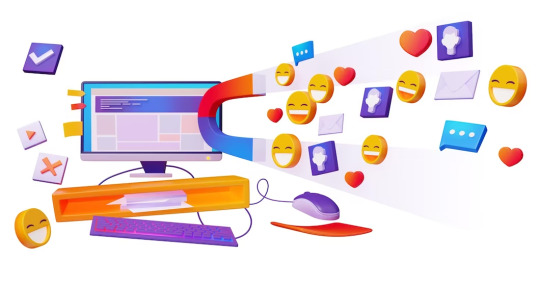
Developing a Social Inbox Strategy
So how do you go about developing a social inbox strategy that works for your business? Here are a few key steps:
1. Choose the right tools
The first step is to choose the right tools for your social inbox. There are a number of social media management and CRM platforms available, each with its own strengths and weaknesses.
Do your research to find the tools that best fit your needs and budget, and make sure they integrate smoothly with your existing social media accounts.
2. Assign roles and responsibilities
Next, it's important to assign roles and responsibilities for managing your social inbox. Depending on the size of your team and the volume of social media activity you receive, you may need to designate specific individuals to handle monitoring and responding to messages.
Make sure everyone knows what their role is, and establish clear guidelines and protocols for how messages should be handled.
3. Set up alerts and notifications
To ensure you stay on top of incoming messages and comments, set up alerts and notifications within your social inbox. This could include email alerts, push notifications, or in-app alerts, depending on the tools you are using.
Make sure these alerts are customized to your preferences and provide enough information to make it easy to respond quickly.
4. Analyze and adjust
Finally, it's important to continually analyze and adjust your social inbox strategy based on the data you collect. Use analytics tools to track message volume, response times, and customer sentiment, and adjust your approach as needed to improve performance.
By taking a data-driven approach to your social inbox strategy, you can optimize your results and ensure maximum impact.
Final Thoughts
In today's digital landscape, a well-executed social media strategy can make all the difference in the success of your business. And by developing a solid social inbox strategy, you can ensure that you are able to manage and respond to customer inquiries and comments with speed and efficiency, while also building stronger relationships and improving your brand reputation. So if you haven't already, now is the time to start thinking seriously about your social inbox strategy and how you can take your social media game to the next level.
#free social media monitoring#social listening in marketing#social media listening#social mention free tool#marketing social listening#social listening dashboard
0 notes
Text
This is not a drill

This is IMPORTANT especially if you live in the USA or use the internet REGULATED by the USA!!!!
Do not scroll. Signal boost. Reblog.
Reblog WITHOUT reading if you really can't right now, I promise all the links and proof are here. People NEED to know this.
( I tried to make this accessible but you can't cater to EVERYONE so please just try your best to get through this or do your own research 🙏)
TLDR: Homeland Security has been tying our social media to our IPs, licenses, posts, emails, selfies, cloud, apps, location, etc through our phones without a warrant using Babel X and will hold that information gathered for 75 years. Certain aspects of it were hushed because law enforcement will/does/has used it and it would give away confidential information about ongoing operations.
This gets renewed in September.
Between this, Agincourt (a VR simulator for cops Directly related to this project), cop city, and widespread demonization of abortions, sex workers, & queer people mixed with qanon/Trumpism, and fascism in Florida, and the return of child labor, & removed abortion rights fresh on our tails it's time for alarms to be raised and it's time for everyone to stop calling us paranoid and start showing up to protest and mutual aid groups.
🚨🚨🚨🚨🚨🚨🚨🚨🚨🚨
These are the same feds who want to build cop city and recreate civilian houses en masse and use facial recognition. The same feds that want cop city to also be a training ground for police across the country. Cop city where they will build civilian neighborhoods to train in.
Widespread mass surveillance against us.
Now let's cut to some parts of the article. May 17th from Vice:
Customs and Border Protection (CBP) is using an invasive, AI-powered monitoring tool to screen travelers, including U.S. citizens, refugees, and people seeking asylum, which can in some cases link their social media posts to their Social Security number and location data, according to an internal CBP document obtained by Motherboard.
Called Babel X, the system lets a user input a piece of information about a target—their name, email address, or telephone number—and receive a bevy of data in return, according to the document. Results can include their social media posts, linked IP address, employment history, and unique advertising identifiers associated with their mobile phone. The monitoring can apply to U.S. persons, including citizens and permanent residents, as well as refugees and asylum seekers, according to the document.
“Babel data will be used/captured/stored in support of CBP targeting, vetting, operations and analysis,” the document reads. Babel X will be used to “identify potential derogatory and confirmatory information” associated with travelers, persons of interest, and “persons seeking benefits.” The document then says results from Babel X will be stored in other CBP operated systems for 75 years.
"The U.S. government’s ever-expanding social media dragnet is certain to chill people from engaging in protected speech and association online. And CBP’s use of this social media surveillance technology is especially concerning in connection with existing rules requiring millions of visa applicants each year to register their social media handles with the government. As we’ve argued in a related lawsuit, the government simply has no legitimate interest in collecting and retaining such sensitive information on this immense scale,” Carrie DeCell, senior staff attorney at the Knight First Amendment Institute, told Motherboard in an email.
The full list of information that Babel X may provide to CBP analysts is a target’s name, date of birth, address, usernames, email address, phone number, social media content, images, IP address, Social Security number, driver’s license number, employment history, and location data based on geolocation tags in public posts.
Bennett Cyphers, a special advisor to activist
organization the Electronic Frontier Foundation, told Motherboard in an online chat “the data isn’t limited to public posts made under someone’s real name on Facebook or Twitter.”
The document says CBP also has access to AdID information through an add-on called Locate X, which includes smartphone location data. AdID information is data such as a device’s unique advertising ID, which can act as an useful identifier for tracking a phone and, by extension, a person’s movements. Babel Street obtains location information from a long supply chain of data. Ordinary apps installed on peoples’ smartphones provide data to a company called Gravy Analytics, which repackages that location data and sells it to law enforcement agencies via its related company Venntel. But Babel Street also repackages Venntel’s data for its own Locate X product."
The PTA obtained by Motherboard says that Locate X is covered by a separate “commercial telemetry” PTA. CBP denied Motherboard’s FOIA request for a copy of this document, claiming it “would disclose techniques and/or procedures for law enforcement investigations or prosecutions”.
A former Babel Street employee previously told Motherboard how users of Locate X can draw a shape on a map known as a geofence, see all devices Babel Street has data on for that location, and then follow a specific device to see where else it has been.
Cyphers from the EFF added “most of the people whose location data is collected in this way likely have no idea it’s happening.”
CBP has been purchasing access to location data without a warrant, a practice that critics say violates the Fourth Amendment. Under a ruling from the Supreme Court, law enforcement agencies need court approval before accessing location data generated by a cell phone tower; those critics believe this applies to location data generated by smartphone apps too.
“Homeland Security needs to come clean to the American people about how it believes it can legally purchase and use U.S. location data without any kind of court order. Americans' privacy shouldn't depend on whether the government uses a court order or credit card,” Senator Ron Wyden told Motherboard in a statement. “DHS should stop violating Americans' rights, and Congress should pass my bipartisan legislation to prohibit the government's purchase of Americans' data." CBP has refused to tell Congress what legal authority it is following when using commercially bought smartphone location data to track Americans without a warrant.
Neither CBP or Babel Street responded to a request for comment. Motherboard visited the Babel X section of Babel Street’s website on Tuesday. On Wednesday before publication, that product page was replaced with a message that said “page not found.”
Do you know anything else about how Babel X is being used by government or private clients? Do you work for Babel Street? We'd love to hear from you. Using a non-work phone or computer, you can contact Joseph Cox securely on Signal on +44 20 8133 5190, Wickr on josephcox, or email [email protected].
Wow that sounds bad right.
Be a shame if it got worse.
.
.
It does.
The software (previously Agincourt Solutions) is sold by AI data company Babel Street, was led by Jeffrey Chapman, a former Treasury Department official,, Navy retiree & Earlier in his career a White House aide and intelligence officer at the Department of Defense, according to LinkedIn.
🙃
So what's Agincourt Solutions then right now?
SO FUCKING SUS IN RELATION TO THIS, THATS WHAT

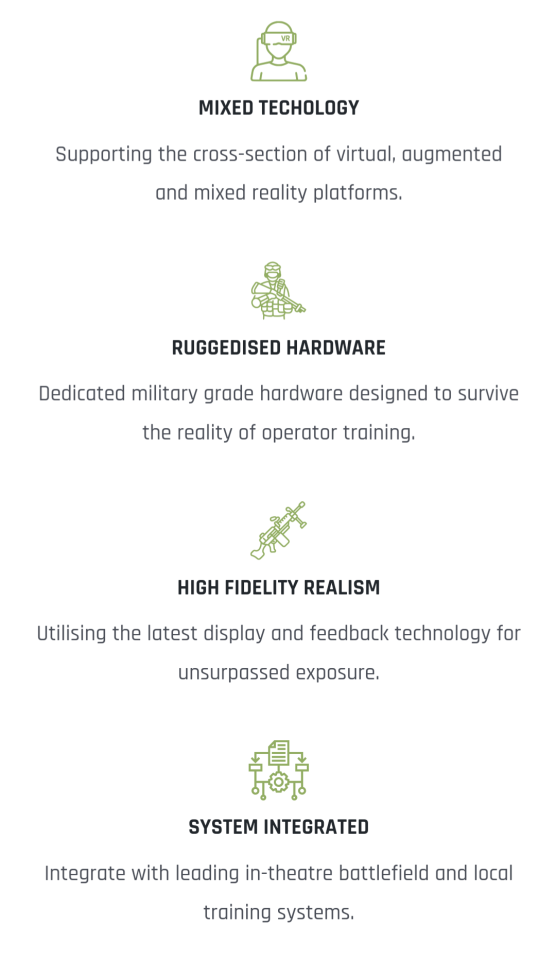
In essence, synthetic BATTLEVR training is a mixture of all three realities – virtual, augmented and physical. It is flexible enough to allow for mission rehearsals of most types and be intuitive enough to make training effective.
Anyway the new CEO of Babel Street (Babel X) as of April is a guy named Michael Southworth and I couldn't find much more on him than that tbh, it's all very vague and missing. That's the most detail I've seen on him.
And the detail says he has a history of tech startups that scanned paperwork and sent it elsewhere, good with numbers, and has a lot of knowledge about cell networks probably.
Every inch more of this I learn as I continue to Google the names and companies popping up... It gets worse.
Monitor phone use. Quit photobombing and filming strangers and for the love of fucking God quit sending apps photos of your actual legal ID to prove your age. Just don't use that site, you'll be fine I swear. And quit posting your private info online. For activists/leftists NO personally identifiable info at least AND DEFINITELY leave your phone at home to Work™!!!
#current events#capitalism#USA#politics#facism#public surveillance#anarchists#democrats#lgbt#direct action#leftist#ndn#indigenous#lesbian#gay#trans#bisexual#neurodivergent#Feminism#privacy rights#human rights#internet#tumblr#signal boost#desantis#florida#queer#refugees#immigration#threads
7K notes
·
View notes